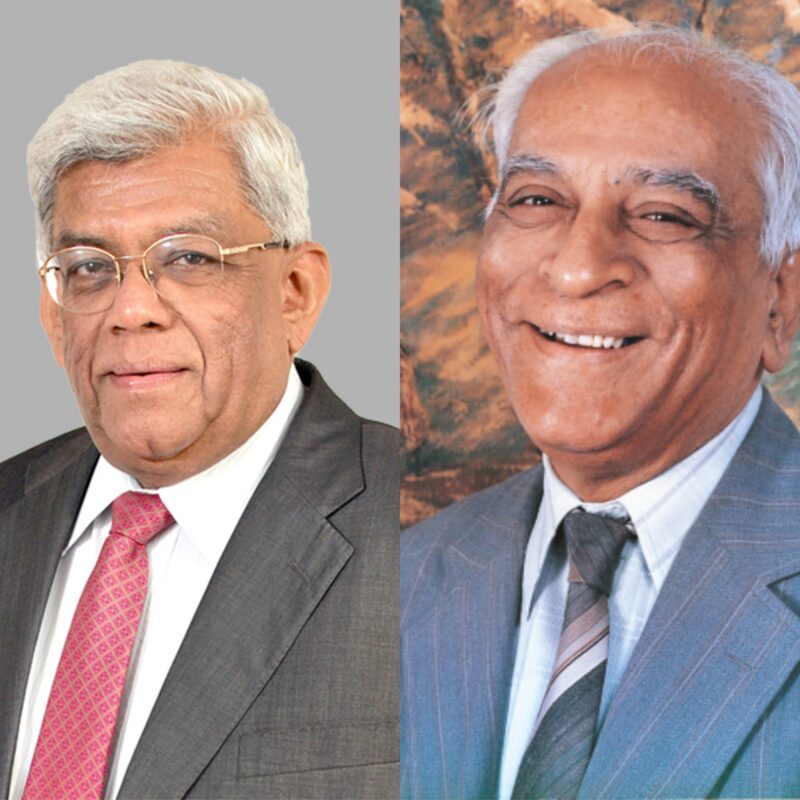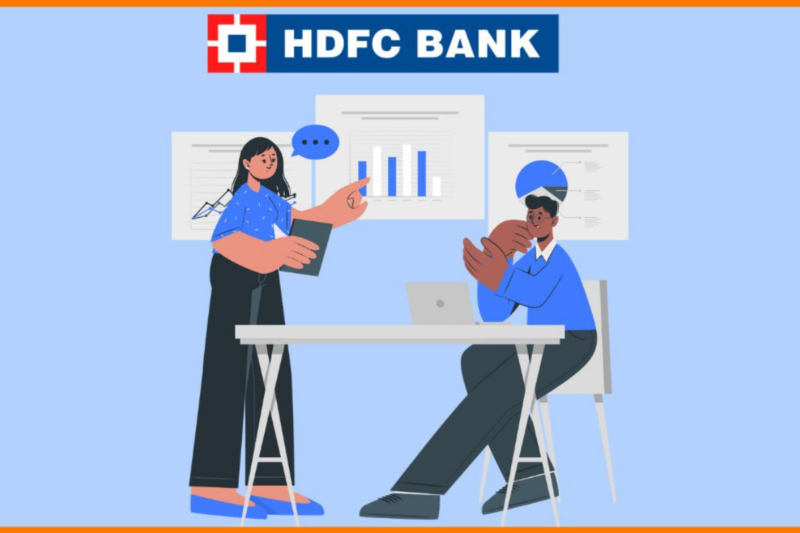HDFC Bank: A Journey Of Growth, Innovation, And Resilience
HDFC Bank: A Journey Of Growth, Innovation, And Resilience
In Indian finance, HDFC Bank is a formidable force, reshaping the banking landscape with its innovative approach and unwavering commitment to customer satisfaction. Since its humble beginnings, the bank has evolved into one of India’s largest private sector banks, earning the trust and loyalty of millions. This article takes you on a journey through the remarkable story of HDFC Bank – from its foundation to its current position as a trailblazer in the banking industry.
- The Birth of a Vision

In August 1994, HDFC Bank was founded by Housing Development Finance Corporation Limited (HDFC), one of India’s premier housing finance institutions. The bank’s inception was driven by the visionary minds of Hasmukh Parekh and Deepak Parekh. Their collective ambition was establishing a bank to revolutionize the Indian banking industry and catalyze economic growth and development.
With a clear vision, the founders sought to address the prevailing challenges in the banking sector and redefine how financial services were delivered. They recognized the need for a customer-centric approach, prioritizing convenience, accessibility, and transparency. The birth of HDFC Bank marked a significant milestone in the Indian banking landscape. It signaled a departure from traditional banking practices and embraced a progressive approach catering to customers’ evolving needs in the digital age. This visionary approach continues to drive HDFC Bank’s success, shaping it into the renowned institution it is today.
2. The Early Days
In the early days of its existence, HDFC Bank, initially known as ‘HDFC Bank Limited,’ embarked on its journey in the bustling city of Mumbai. The bank’s founders set out with a clear objective: to provide comprehensive financial services that cater to the diverse needs of individuals and businesses.
During its nascent stage, HDFC Bank offered various products and services to empower customers in their financial endeavors. These offerings included personal loans, savings accounts, credit cards, and other banking facilities. The founders recognized the need for accessible and reliable financial solutions to support the aspirations of a rapidly evolving Indian society.
By establishing HDFC Bank, the founders aimed to bridge the gap in the banking sector and promote economic growth. They envisioned a bank providing traditional banking services and embracing innovation and technology to deliver a superior customer experience. The motive behind starting this business was to create a financial institution to redefine banking in India. The founders sought to instill a customer-centric approach, focusing on building trust, offering competitive interest rates, and providing efficient services. They envisioned becoming the preferred banking partner for individuals, families, and businesses nationwide.
- Overcoming Initial Challenges
Like any pioneering venture, HDFC Bank faced several hurdles during its early years. The path to success was not without obstacles, but the bank’s perseverance and determination paved the way for its remarkable growth.
- Intense competition: The Indian banking sector was already populated with well-established players, making it challenging for a new entrant to carve out a niche. However, HDFC Bank approached this challenge with a unique proposition: a customer-centric approach focused on providing innovative solutions tailored to the market’s evolving needs.
- Regulatory compliance: The banking industry operates in a highly regulated environment, and ensuring compliance with the complex regulatory framework requires meticulous attention to detail. HDFC Bank navigated this obstacle by building a robust internal control system and adhering to best practices in corporate governance. This commitment to regulatory compliance helped the bank establish a reputation for trust and reliability.
- Establishing a strong customer base: HDFC Bank had to compete for customers in a market where trust and loyalty were already established with existing banks. To overcome this, the bank employed a multi-pronged strategy. It focused on building solid customer relationships by providing personalized services, ensuring transparency, and exceeding customer expectations.
- Operational challenges: In terms of infrastructure and technology, it required a robust IT infrastructure to support its operations and deliver seamless banking services to its customers. The bank invested heavily in technology, establishing a state-of-the-art IT infrastructure and leveraging innovative solutions to enhance efficiency and customer experience.
- Current Ownership and Growth
HDFC Bank is owned by HDFC Limited, a financial conglomerate with its headquarters in Mumbai, India. HDFC Limited is the bank’s majority shareholder, holding a significant stake. The bank’s ownership structure ensures a strong foundation and seamless integration of services within the HDFC Group. The founders of HDFC Bank, including Deepak Parekh, continue to play an active role in the organization’s growth and strategic decision-making. Their experience and expertise have been instrumental in shaping the bank’s trajectory and maintaining its position as a leader in the banking industry.
While HDFC Bank’s roots remain in India, its presence has significantly expanded. It has established a robust network of branches and representative offices domestically and internationally. This expansion has allowed the bank to tap into new markets, diversify its customer base, and cater to the evolving needs of a global clientele.
- Comprehensive Range of Products and Services

Image Credits: Startup Talky
HDFC Bank has evolved, expanding its product and service portfolio to cater to the changing needs of its customers. Today, it offers comprehensive financial solutions, reaffirming its commitment to being a one-stop destination for all banking requirements.
In the retail banking segment, HDFC Bank provides individuals with a wide range of products and services, including savings accounts, current accounts, fixed deposits, and recurring deposits. Customers can also avail themselves of various loan options, such as personal, home, car, and educational loans, with competitive interest rates and flexible repayment terms.
Moreover, HDFC Bank has a diverse suite of credit cards tailored to different customer segments, offering rewards, cashback, travel benefits, and exclusive privileges. The bank has also introduced innovative digital payment solutions, enabling seamless transactions through mobile banking, internet banking, and its user-friendly mobile app. Recognizing the unique financial needs of businesses, HDFC Bank offers comprehensive corporate banking services. These encompass trade finance, cash management, supply chain finance, working capital loans, project finance, and treasury services. HDFC Bank supports enterprises’ growth and expansion plans by leveraging its expertise and robust network.
Additionally, the bank provides investment and wealth management services, including mutual funds, equity and derivatives trading, portfolio management, and insurance products. These offerings enable customers to optimize their investment strategies and protect their financial well-being. With an emphasis on technological innovation, HDFC Bank has also introduced digital-first products like contactless debit and credit cards, digital savings accounts, and customized wealth management platforms. These initiatives reflect the bank’s commitment to staying ahead in the digital era and providing customers with convenient, secure, and user-friendly banking experiences.
- Expanding Global Footprint
While HDFC Bank’s roots are firmly planted in India, the institution has ventured beyond national boundaries. With an aspiration to become a global player in the banking industry, HDFC Bank has established its presence in several countries, extending its reach to international markets.
One of the notable expansions for HDFC Bank has been in the United Arab Emirates, with a branch in Dubai. This strategic move allowed the bank to tap into the thriving Middle Eastern market and cater to the financial needs of the large Indian diaspora residing in the region. HDFC Bank has also made its mark in global financial centers such as London, Singapore, and Hong Kong. These locations serve as critical hubs for international business and finance, enabling the bank to facilitate seamless cross-border transactions and provide customers with a wide range of banking services. In addition to these cities, HDFC Bank has expanded its footprint in other countries like Bahrain, Qatar, and the United States, establishing representative offices.
- Key Performance Indicators (KPIs)

Image Credits: eLearning Industry
HDFC Bank monitors various KPIs spanning various aspects of its operations.
- Customer satisfaction: This is measured through surveys, feedback mechanisms, and complaint resolution metrics. By prioritizing customer-centricity, the bank consistently meets and exceeds customer expectations.
- Asset quality: The bank diligently manages its loan portfolio, keeping a close eye on non-performing assets (NPAs) and maintaining a healthy ratio of bad loans. This focus on asset quality enhances the bank’s stability and resilience during economic fluctuations.
- Profitability: The bank aims to generate sustainable profits by effectively managing its revenue streams, controlling costs, and optimizing its overall financial performance. By maintaining a solid profitability position, HDFC Bank can reinvest in its operations, improve customer offerings, and expand its reach.
- Market share: As a leading player in the Indian banking sector, the bank strives to enhance its market share by attracting new customers, increasing wallet share among existing customers, and outperforming competitors. This focus on market share helps HDFC Bank solidify its position as a market leader, and further fuels its growth.
- Upholding Integrity and Transparency
While HDFC Bank has enjoyed tremendous success, it has faced challenges along the way. In recent years, the bank has been confronted with certain legal matters, highlighting the importance of upholding integrity and transparency in the banking industry.
In 2020, HDFC Bank faced a significant setback when it encountered technical glitches in its Internet banking and mobile banking services. This disruption led to a temporary suspension of online transactions and caused inconvenience to its customers. The incident prompted regulatory scrutiny and a thorough investigation into the bank’s technology infrastructure.
In 2020, A lawsuit had been filed against HDFC in the United States , adding to its existing legal troubles. The lawsuit alleged that HDFC Bank misled investors about the internal control systems and failed to disclose the extent of its regulatory compliance deficiencies. The plaintiffs claimed that these actions resulted in financial losses for investors.
Additionally, in 2021, HDFC Bank was involved in a case relating to alleged improper lending practices and violation of banking regulations. The bank was accused of providing loans to certain companies without appropriate due diligence, which raised concerns regarding credit risk management and adherence to regulatory norms. As a result, the Reserve Bank of India (RBI) imposed penalties and restrictions on the bank, including a temporary halt on the issuance of new credit cards.
- Financial Highlights
HDFC Bank’s financial performance has been exemplary, reflecting its strong market presence and customer trust. As of 2023, the bank has achieved impressive financial figures, establishing itself as a key player in the banking industry.
Market Capitalization: HDFC Bank’s market capitalization, a key indicator of its value in the market, stands at an impressive figure of approximately INR 9.5 trillion, showcasing investor confidence in the bank’s growth prospects.
Revenue: The bank has consistently witnessed robust revenue growth. In 2023, HDFC Bank reported a total revenue of around INR 1.5 trillion, reflecting its ability to generate substantial income from its diverse range of banking services.
Profits: HDFC Bank has demonstrated remarkable profitability, consistently delivering strong financial results. In 2023, the bank recorded a net profit of approximately INR 32,000 crores, showcasing its ability to generate substantial returns for its stakeholders.
Loans: HDFC Bank’s lending activities have been a significant driver of its revenue. As of 2023, the bank has disbursed loans amounting to around INR 11.5 trillion, demonstrating its role in supporting economic growth and meeting the financing needs of individuals and businesses.
Debt Management: Despite its robust lending activities, HDFC Bank has maintained a prudent approach to debt management. As of 2023, the bank has a debt amount of INR 256,548 crores.
- Unleashing the Power of Technology
Beyond the numbers, HDFC Bank has made significant strides in the digital banking landscape. It has embraced technological advancements to deliver innovative services, enhance customer experiences, and facilitate seamless transactions. The bank’s focus on digital transformation has not only enhanced efficiency but also made banking accessible to a broader segment of the population.
Conclusion
The journey of HDFC Bank is a testament to the power of vision, resilience, and innovation. From its humble beginnings to becoming a banking giant, HDFC Bank has constantly adapted to changing market dynamics while keeping customer satisfaction at the core of its operations. With a commitment to upholding the highest standards of service, HDFC Bank continues to pave the way for a brighter financial future, both in India and across the globe.
Published by Naveenika Chauhan










